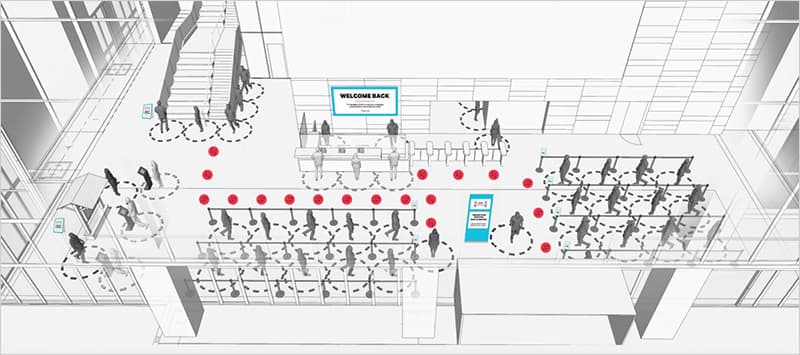Four Health and Safety Tips for Events in a Post-pandemic World


As the event industry eases its way back to live events, a comprehensive health and safety plan is more important than ever. And a few extra hand sanitizer stations aren’t going to cut it. Regardless of the event size, a comprehensive set of policies and procedures are paramount to ensure the comfort and safety of attendees. Here, we break down four tips to maintain health and safety at events in a post-pandemic world.
1. Open up the Lines of Communication
Live events in a post-pandemic world require clear communication between a variety of parties. First, obtain up-to-date safety requirements and guidelines for the city and state where the event takes place. Then designate a point of contact from your brand or agency to establish a line of communication with a local health department representative. Also key for health and safety at events is monitoring statewide health and safety announcements from the governor’s office. Most importantly, communicate with attendees pre- and during the show regarding mandatory safety procedures on site.
2. Assess the Suitability of Your Venue
It’s paramount to analyze the viability of a venue for attendee safety particularly if it’s indoors. First, consider all of the activities at the event. Get a firm estimate of the audience size and then assess which venue matches your needs. Make sure the space is large enough to accommodate social distancing (remember: personal comfort levels vary from attendee to attendee). Be sure to take in account where attendees are required to sit and stand. Be mindful of “pinch points” where crowding occurs. Finally, be sure the venue is relatively close to a healthcare facility.
3. Screen Attendees
No way around it, the new reality is health and safety at events begins with a pre-entrance health screen. Fever is the most common symptom of COVID-19. Touchless thermal scanning is an easy step to assure attendees about the health of fellow show goers. Wynn Las Vegas’ new Health and Sanitation Program includes thermal cameras at all entry points. And while there are questions about the effectiveness of preventing the spread of the virus, thermal scanning is expected at properly managed events.
4. Create Opportunities for Self-Care
There are a myriad of methods and protocols to support attendee health and safety at events; lots of issues to consider. However, there’s an important often overlooked good health component: self-care — the best defense against a virus is a healthy immune system. Be sure to incorporate socially responsible wellness programs and physical activities into your event agenda. It’s a great way for attendees to maintain their health regime, reduce stress, recharge mentally and physically, as well as keep their immune systems working at a high level.
Ensuring attendee health and safety at events is a critical part of the organizer’s checklist. The pandemic raises the stakes. Embrace state and local policies and procedures as you choose venues. Reach out to local health department representatives where the event takes place. Perform health screens as a prerequisite for event entry to give staff and attendees alike peace of mind. Add wellness programs to your event agenda as an added measure for attendees to keep their immune systems charged. It’s a brave new world, but no group is more equipped to roll with this pandemic punch than event marketers.
As the U.S. prepares to get back to business, we understand how critical it is to normalize new safety guidelines into everyday life. These socially responsible strategies are just a few of the ways to keep everyone safe. For more information on getting back to business, email backtobiz@wearesparks.com. You can also browse our range of physical distancing signage, sanitizing stations, sneeze guards/partitions, and so much more, by visiting our online marketplace, The Social Distancing Store.